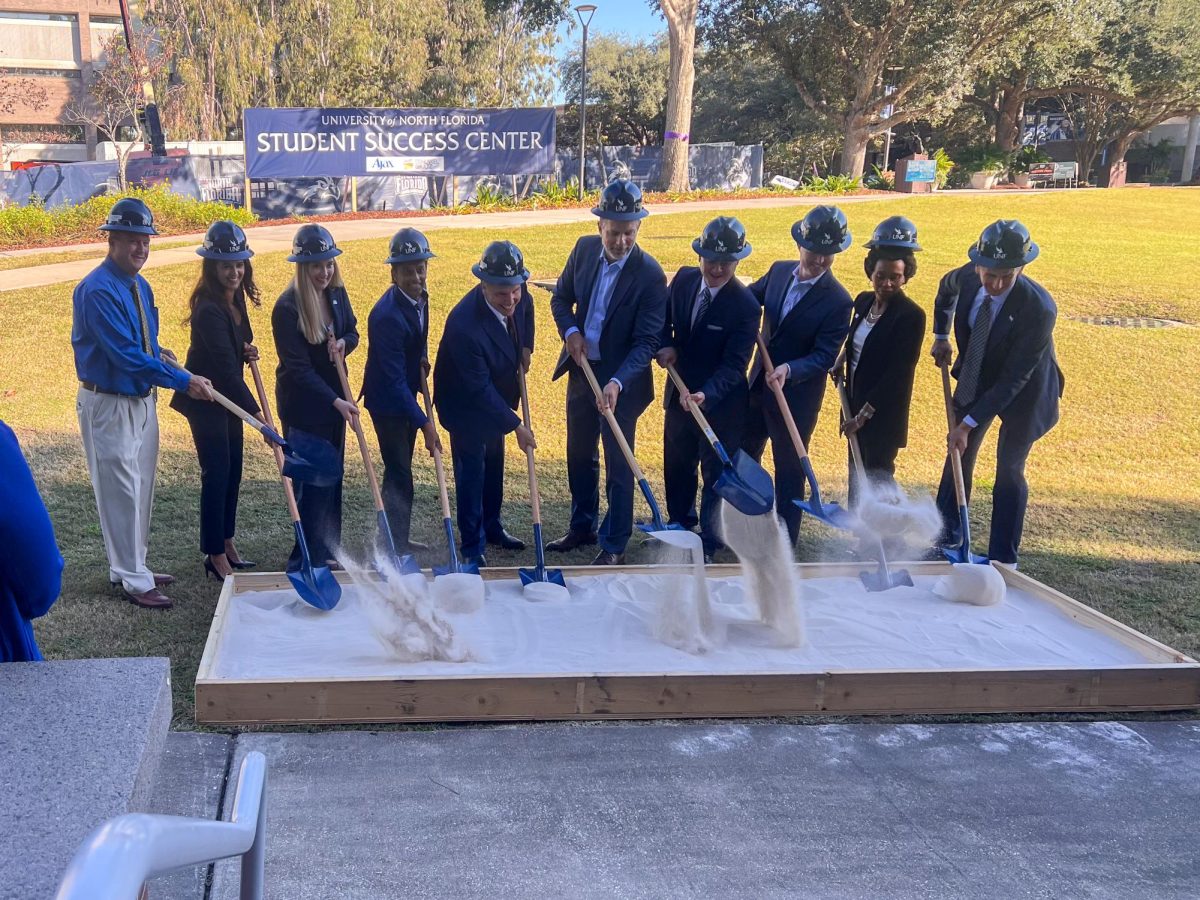Students in UNF’s building construction management program added Apri 6 the finishing touches to a shipping container they helped turn into a portable classroom.
The semester-long project is part of a class, “Industrial Construction TLO,” which gives students the opportunity to apply the skills they are learning in their field. Department Chair Maged Malek teaches the class.
Many students are relieved to see the shipping container finished, especially since it was finished ahead of schedule. Students in the class put numerous hours into the completion of this classroom — around 15-30 hours a week throughout the semester.
Travis Boals, a UNF building construction management senior, said the students in his class have shown a lot dedication by coming in on the weekends to work on the classroom. The work put into the shipping container has been strenuous, he said, but he’s happy with the final product.
Boals said the shipping containers retrofitted in previous classes are not as in-depth as the one his class created. The inside portion of the shipping container measures 38 by 7 feet, using most of the room inside the container.
“We went out of our way to not only do what the last class did, but we were put under pressure to add three more things,” Boals said.
Ashly Ellison, a UNF building construction management senior, said it’s nice to know how to do the work involved in the project for when she gets a job after college.
“I wanted to participate just to get more of a hands-on experience on how to actually start building from the ground up, so I could get the idea before I actually went on a job,” Ellison said.
This shipping container will eventually have solar panels placed on top of it, like many other shipping containers, but this shipping container has a roof similar to one you’d find on a house, which previous shipping containers have not had.
The team worked together to make the classroom comfortable for hot or humid weather, Ellison said, by using white shingles on the roof to reflect the sunlight. It used Oriented Strand Board instead of drywall to make sure the structure of the classroom would hold if the container were to be moved, Ellison said.
The feature of the shipping container that really sets it apart from previous projects is its fully functional half-bathroom. Including a toilet and a sink, the bathroom on the shipping container can be used with a cistern that can be installed later as a separate part of the construction process. The water used in the bathroom would be collected from the gutters on the roof, Boals said.
The third addition to the classroom is an exterior door, which allows for easier access into the classroom.
The shipping container also has a ceiling, and all the electrical wiring ran behind the walls of the classroom.
Boals said using shipping containers for classrooms is beneficial because there’s not a lot of work required when moving it to its intended location. The only work needed would be installations of a cistern and solar panels.
“When you put it on site, it’s complete,” he said. “It’s there for use immediately, unlike a traditional building.”
Boals said the shipping container will most likely stay on campus as a model for other students to see what the end product looks like. Because the shipping container has a roof, it is limited to use in the United States since it cannot be shipped as easily, Boals said.
In order to show off the new classroom, there will be a barbecue April 15 at noon for faculty at the site of the shipping container. The shipping container is located at the back of Lot 18 near the intramural fields.
















Elizabeth | Apr 19, 2011 at 3:02 pm
That sounds neat… thanks for posting.